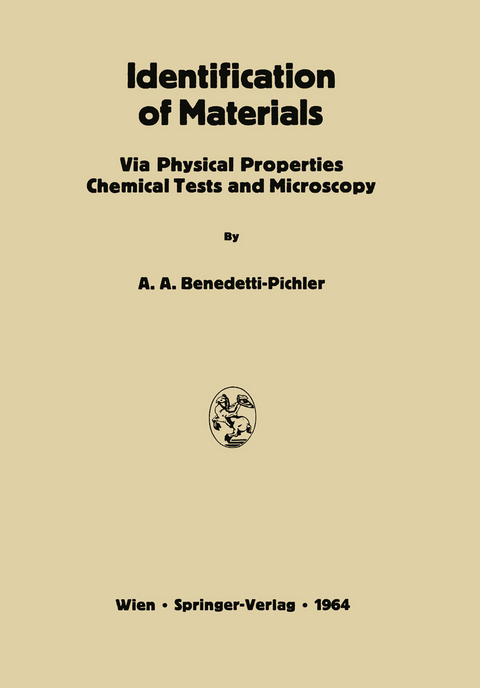
Identification of Materials
Springer Wien (Verlag)
978-3-7091-8109-6 (ISBN)
The Task of Qualitative Analysis.- Principles and Definitions.- Specificity and Sensitivity.- The Method of Qualitative Analysis.- The Minimum Size of the Sample for Chemical Analysis.- Properties Affected by the Size of the System.- Apparatus, Technique, and Scale of Work.- Observation of Properties.- Selection of Procedure.- I: Technique of Observation and Manipulation.- Use of Optical Aids.- Technique of Experimentation and Observation.- II: Systematic Analysis: Choice of Materials and Cleaning.- Sampling for Analysis.- Systematic Procedure of Analysis.- Test Solutions.- Preparation of Unknowns.- Reagents.- Table 1. Color of Some Inorganic Substances.- Table 2. Substances Crystallizing in the Cubic System.- Elements.- Inorganic Compounds.- Organic Compounds.- Table 3. Substances Crystallizing in the Hexagonal System.- Elements.- Inorganic Compounds.- Organic Compounds.- Table 4. List of Common Inorganic Compounds in the Order of Their Melting Points.- Table 5. Inorganic Substances that Sublime, Arranged According to Color.- Table 6. Inorganic Solids which Burst into Flame when Heated in Air, Ignition Temperatures in Centigrades.- Table 7. List of Solids which Explode on Heating.- Inorganic Compounds.- Organic Compounds.- Table 8. Inorganic Solids Moderately Soluble in Water at Room Temperature.- Literature.- General Reference Books.- Theory of Chemical Analysis.- Reagents.- Standard Tests and Procedures of Qualitative Analysis.- Chromatography and Ion Exchange.- Instrumental Methods.- Chemical Microscopy.- Slide Tests and Spot Tests.- Micro Analysis and Microtechnique.- Miscellaneous Applications of Microtechnique.- Mineralogy.- Journals.- Reports.- Theses.- Unpublished Experiments.- Private Communications.- Meetings.- Addresses.
| Erscheint lt. Verlag | 20.11.2013 |
|---|---|
| Zusatzinfo | XI, 492 p. |
| Verlagsort | Vienna |
| Sprache | englisch |
| Maße | 170 x 244 mm |
| Gewicht | 872 g |
| Themenwelt | Naturwissenschaften ► Physik / Astronomie ► Allgemeines / Lexika |
| Schlagworte | alloy • Crystal • density • Fields • liquid • magnetism • metals • Microscopy |
| ISBN-10 | 3-7091-8109-7 / 3709181097 |
| ISBN-13 | 978-3-7091-8109-6 / 9783709181096 |
| Zustand | Neuware |
| Informationen gemäß Produktsicherheitsverordnung (GPSR) | |
| Haben Sie eine Frage zum Produkt? |
aus dem Bereich


